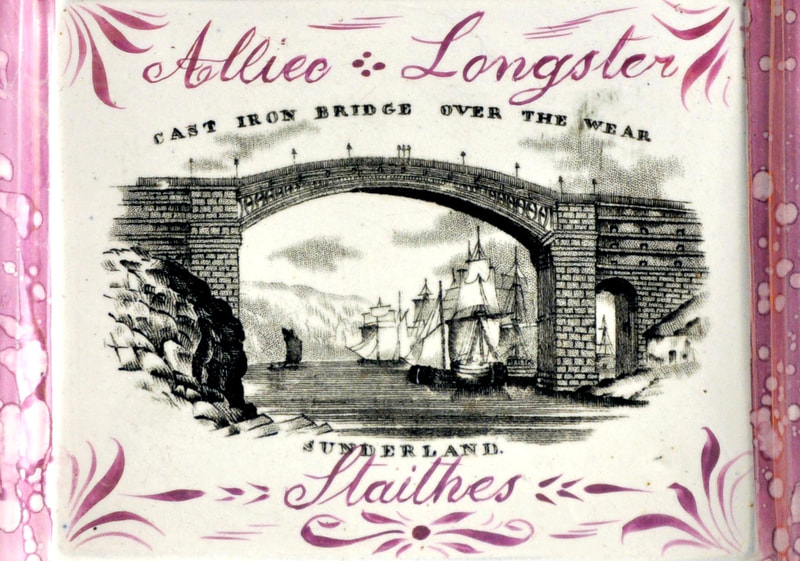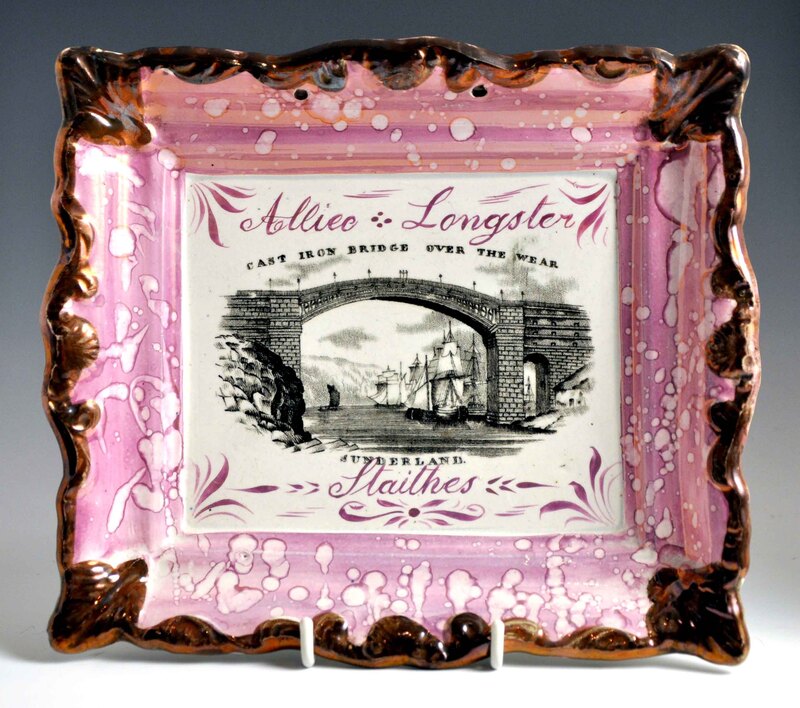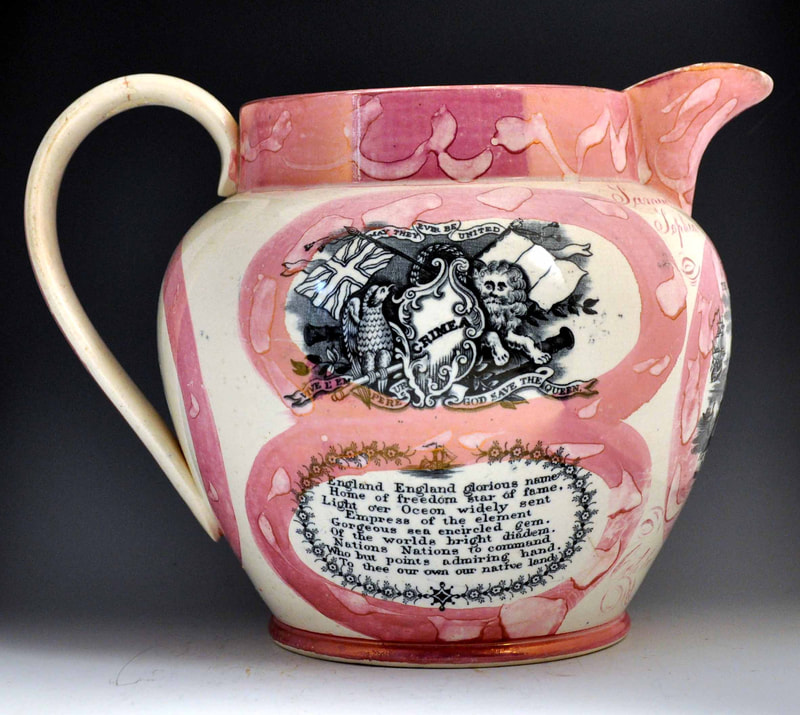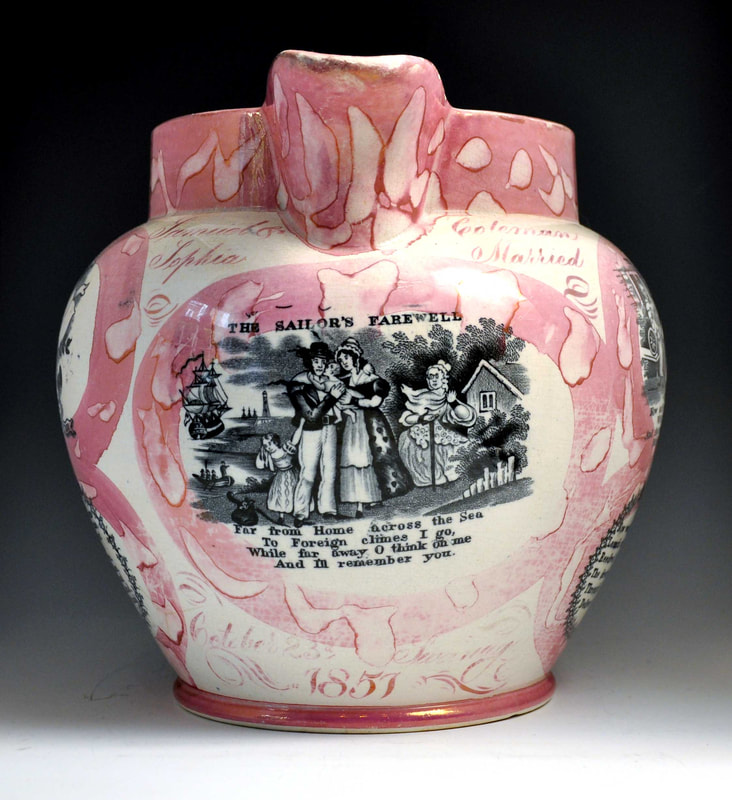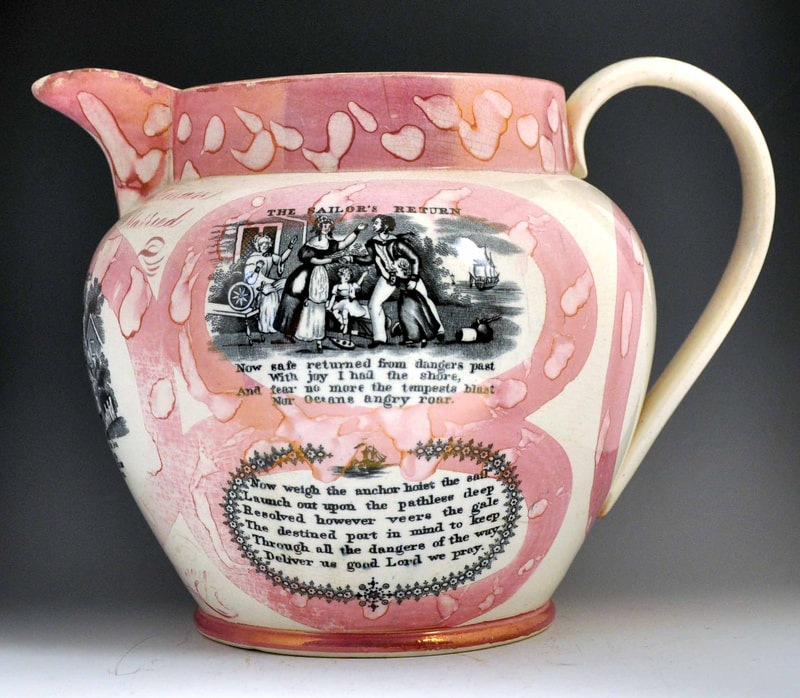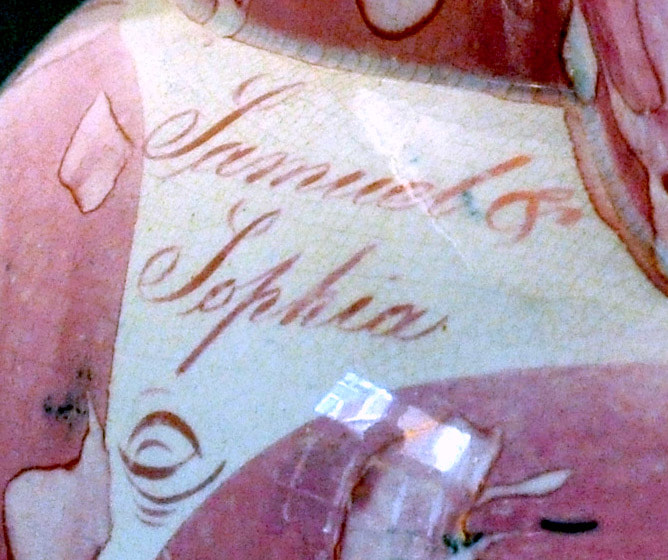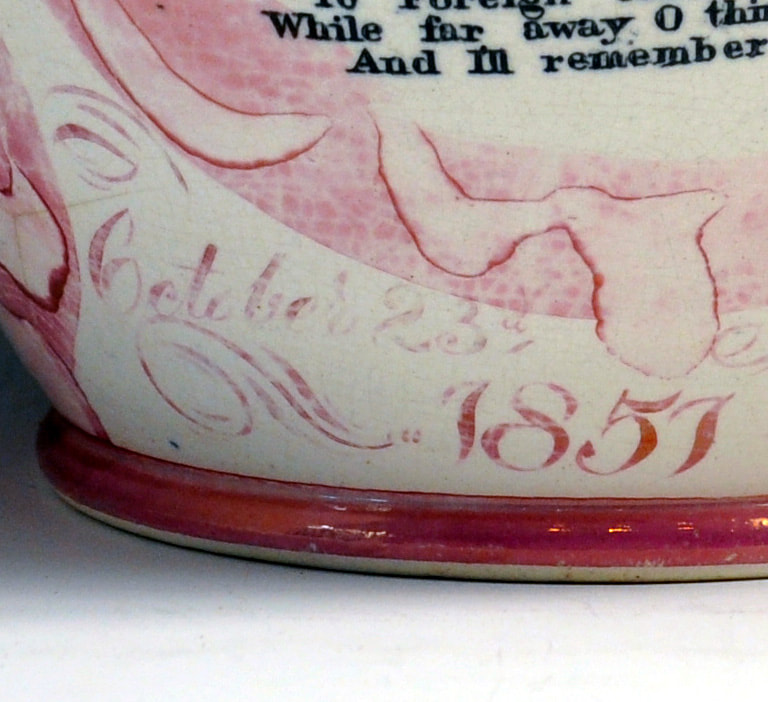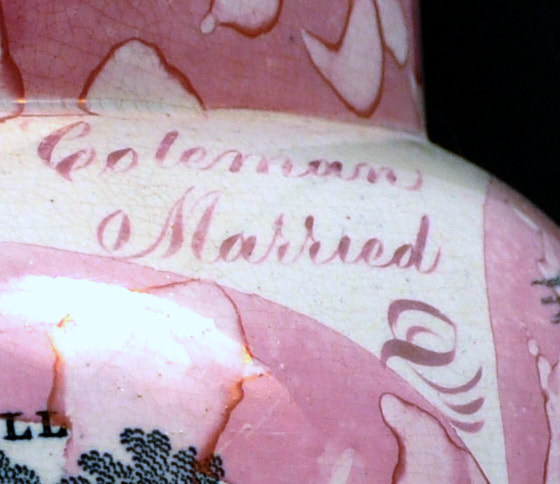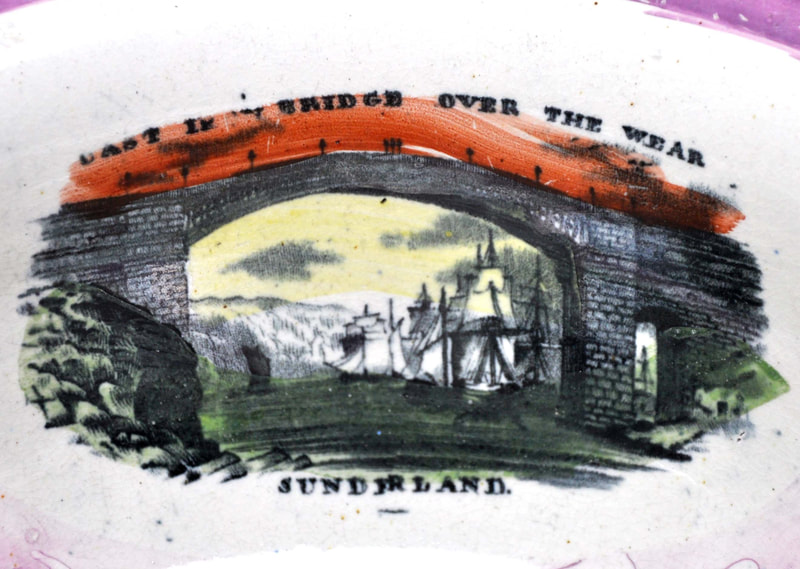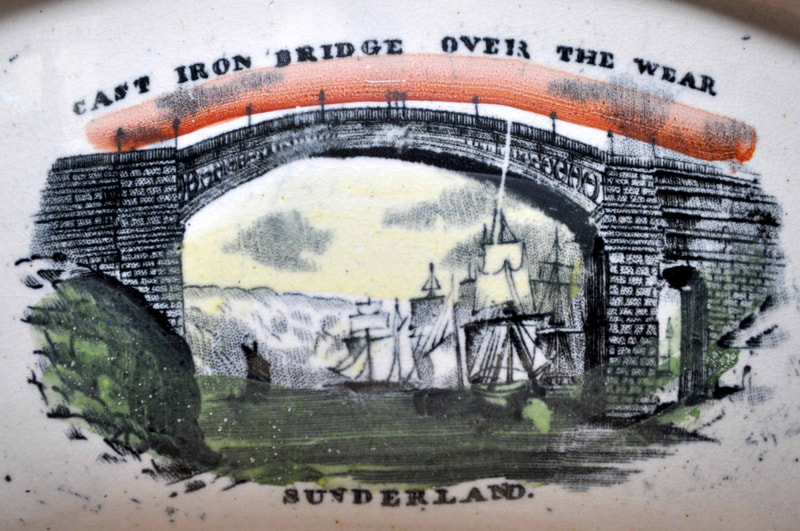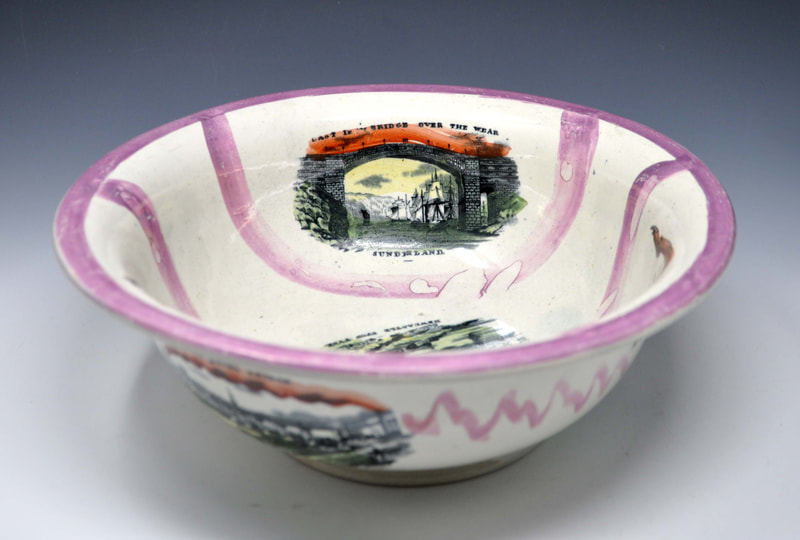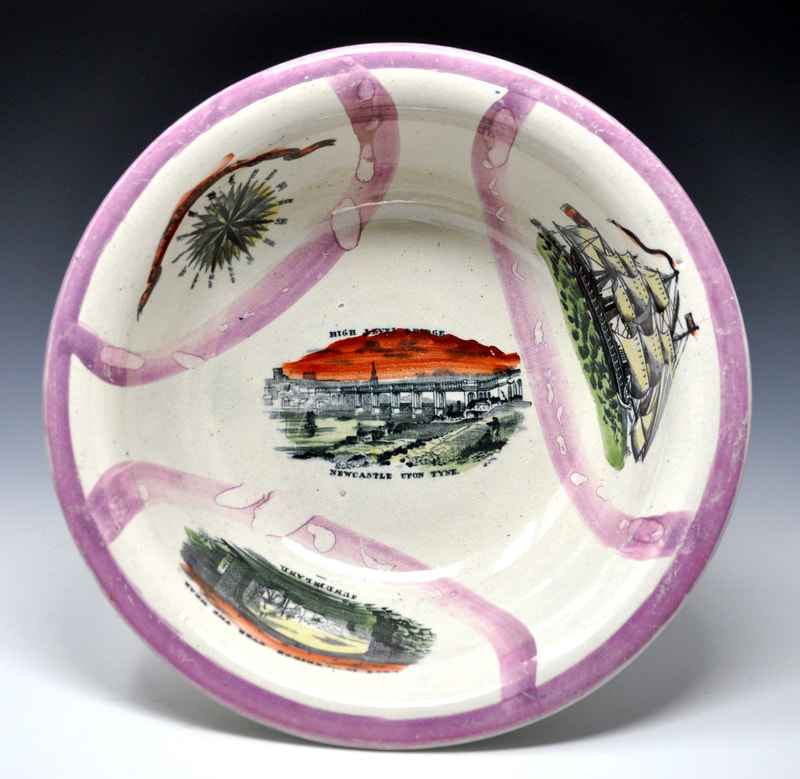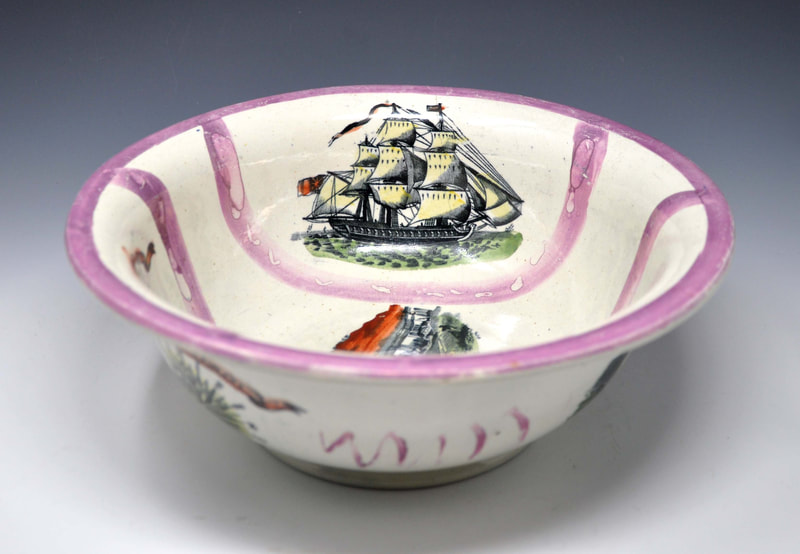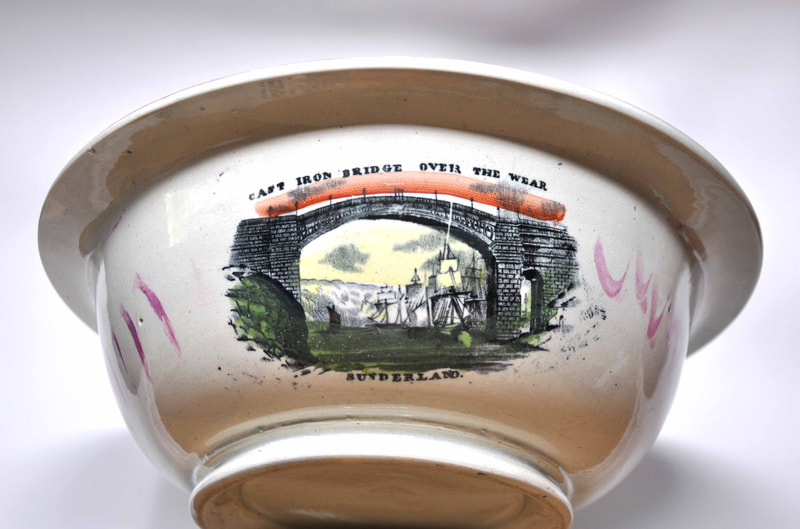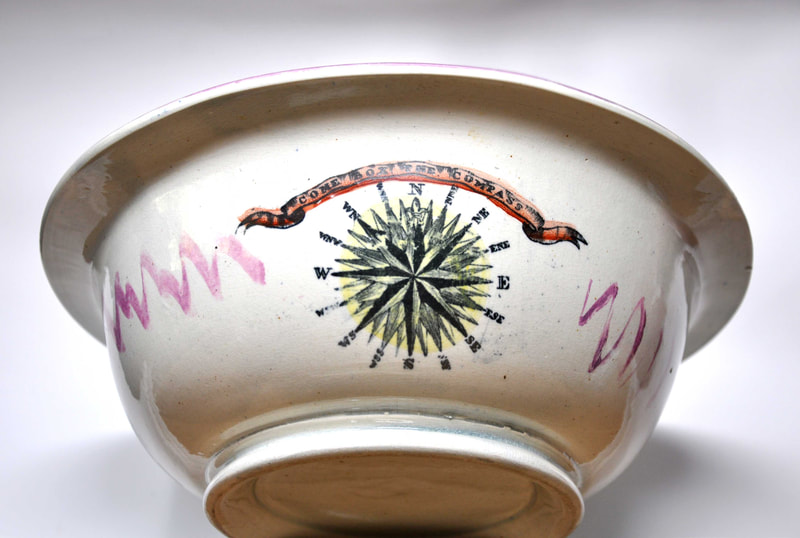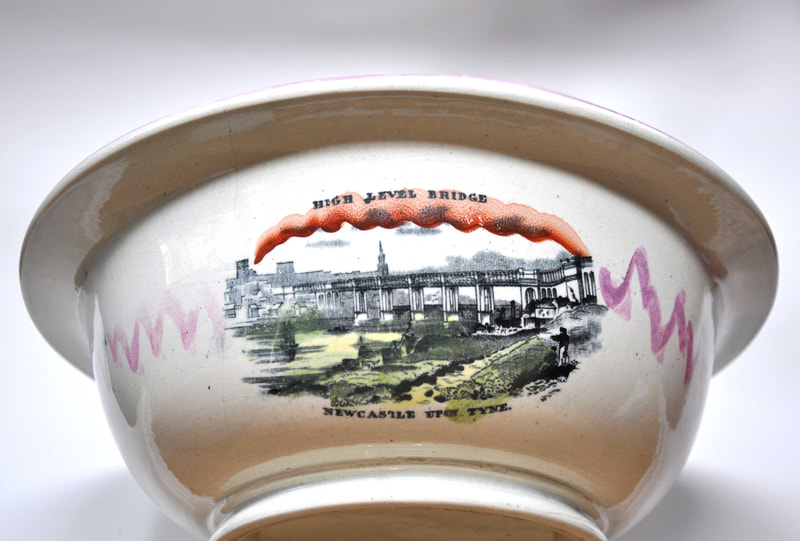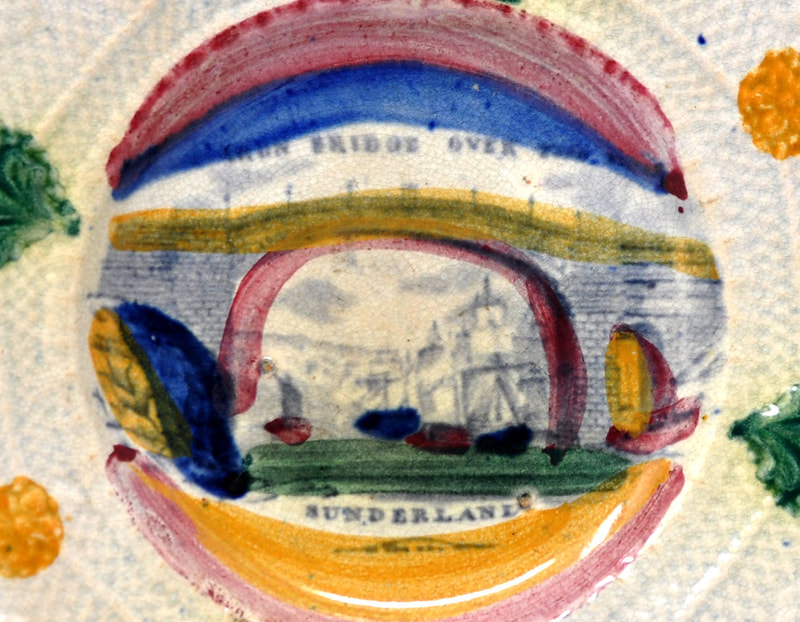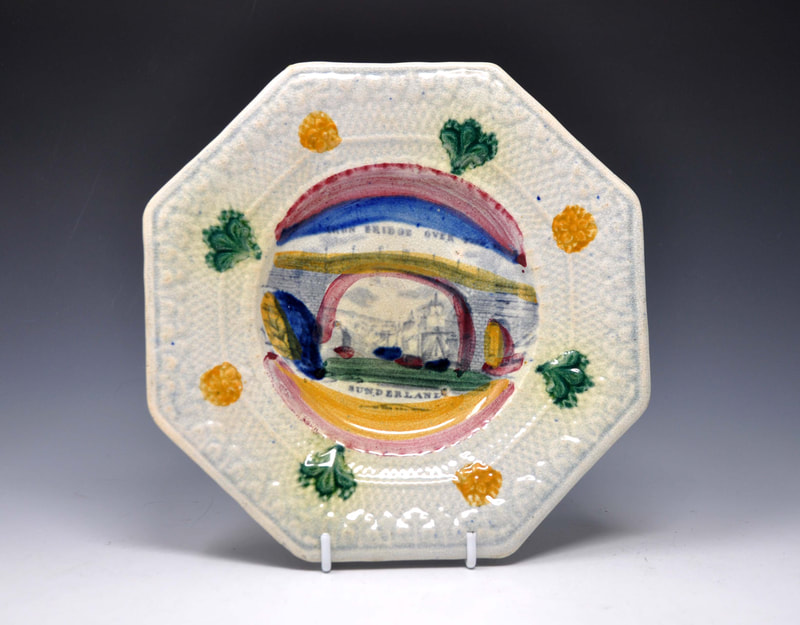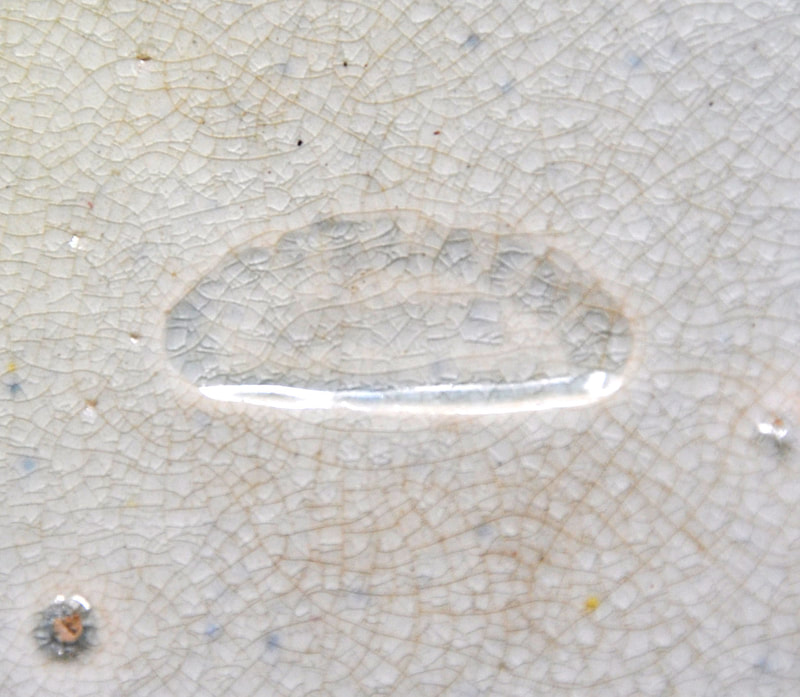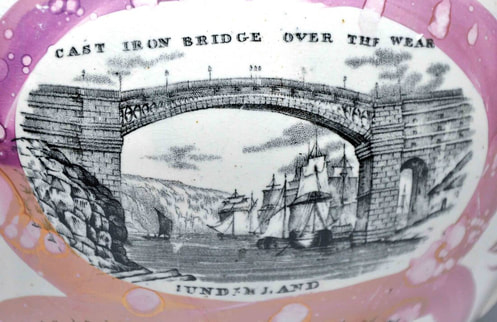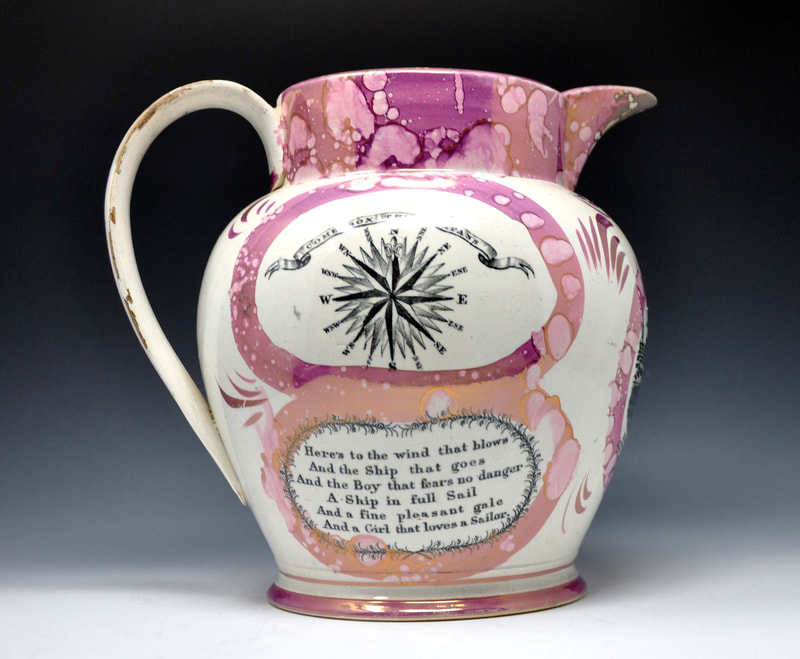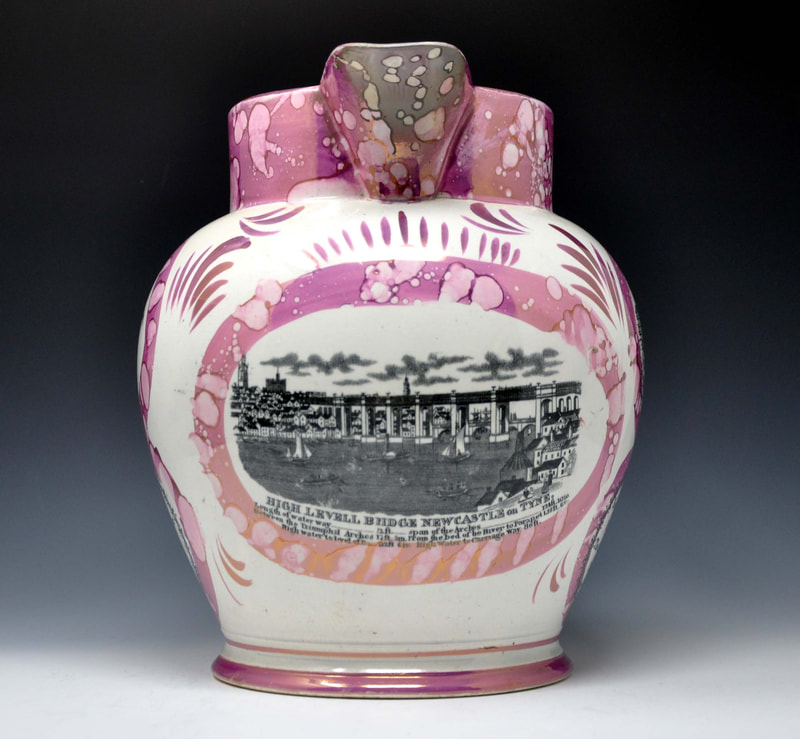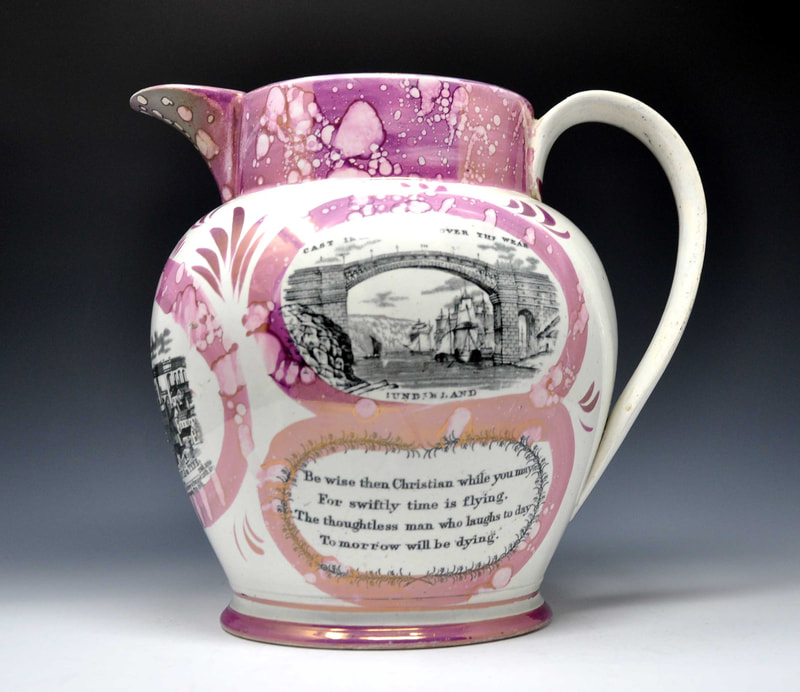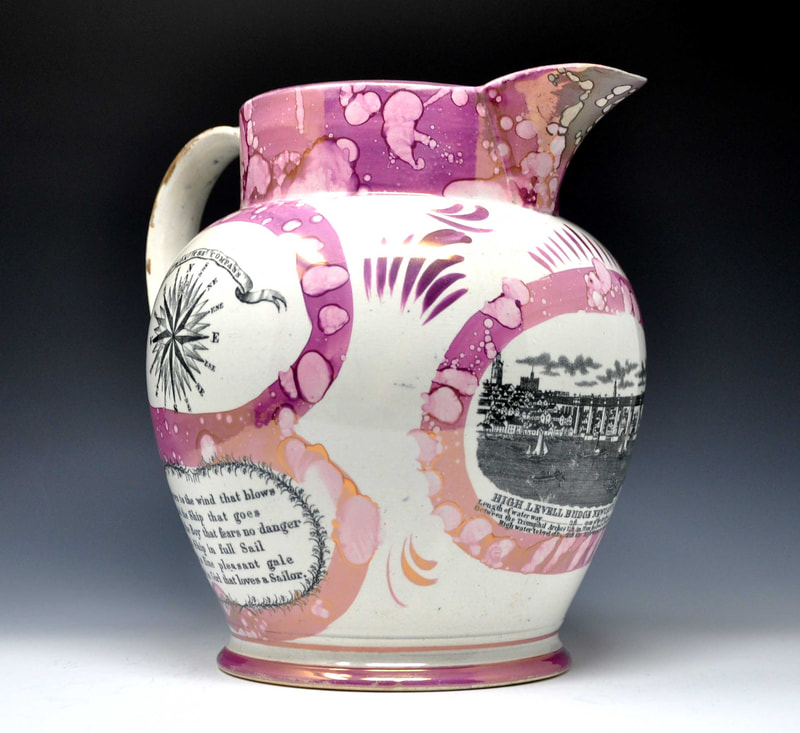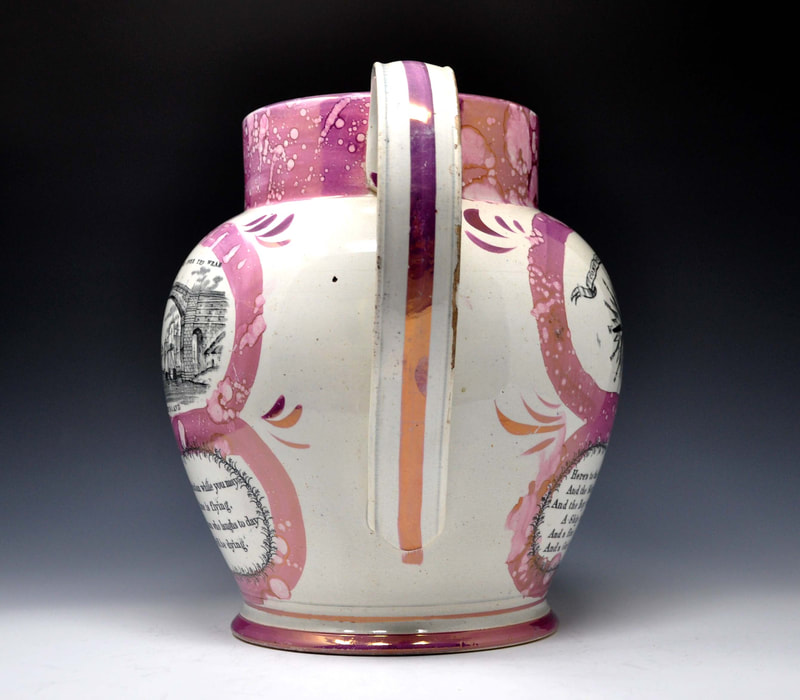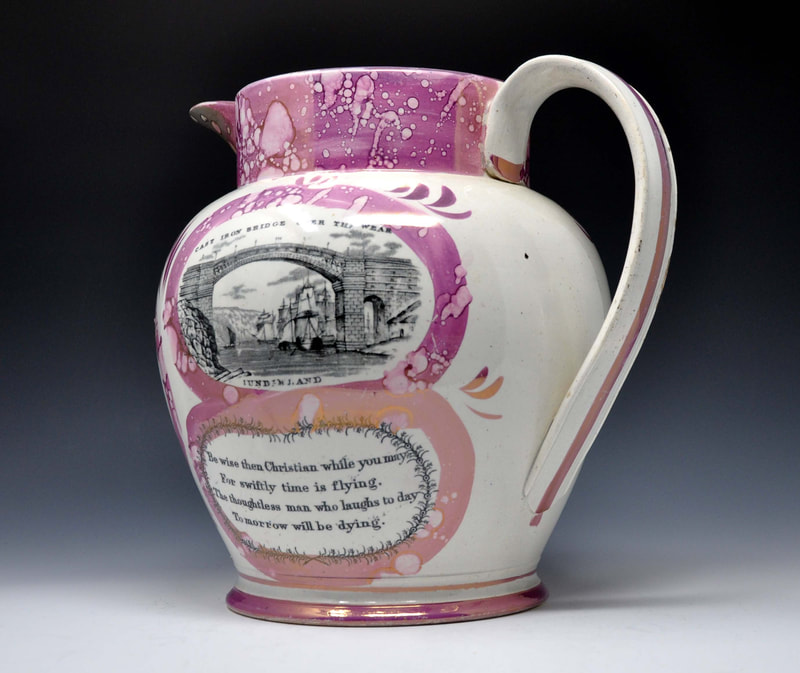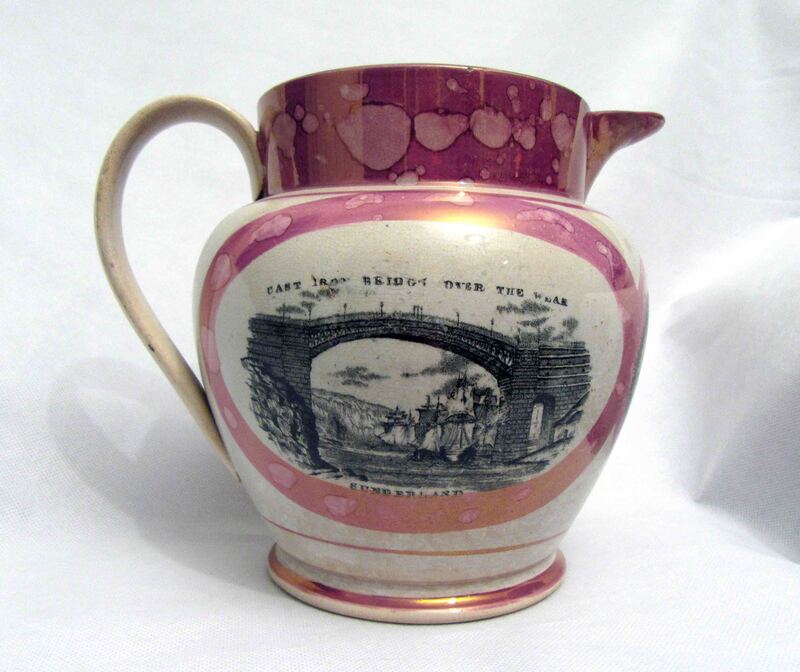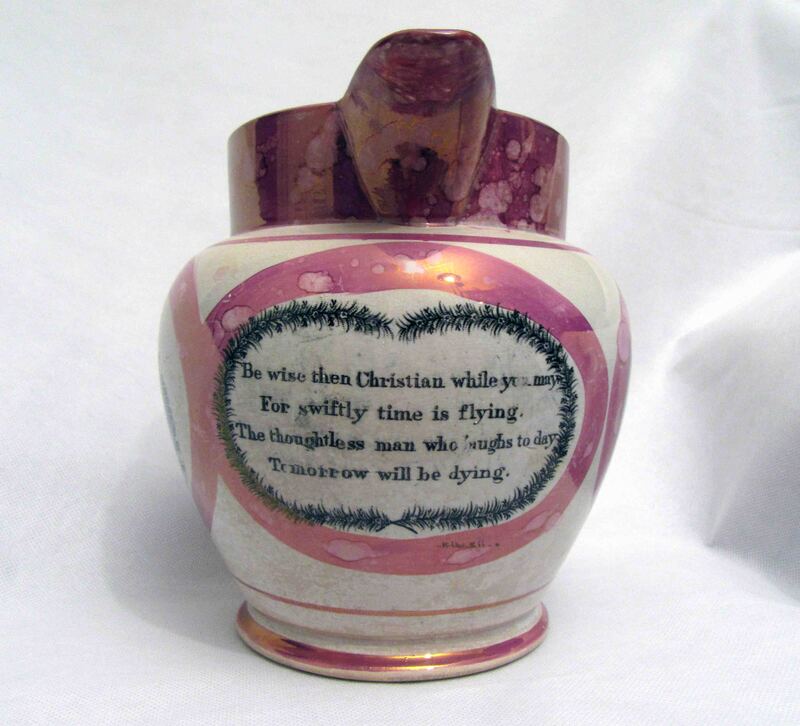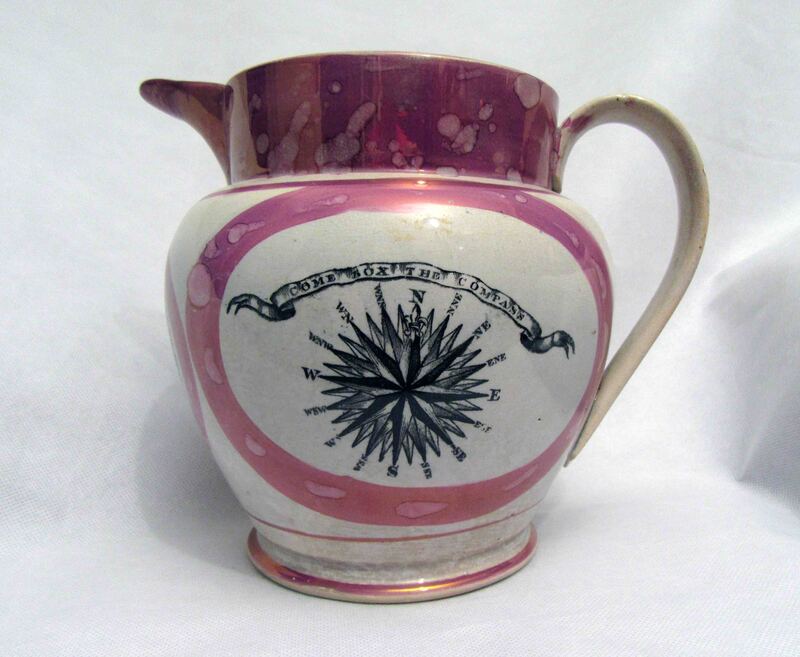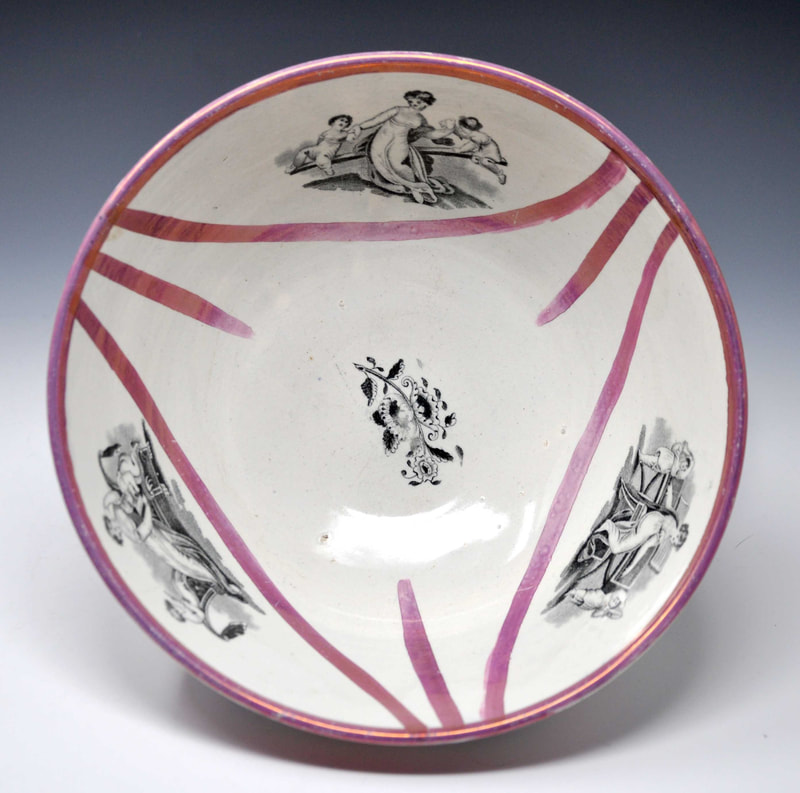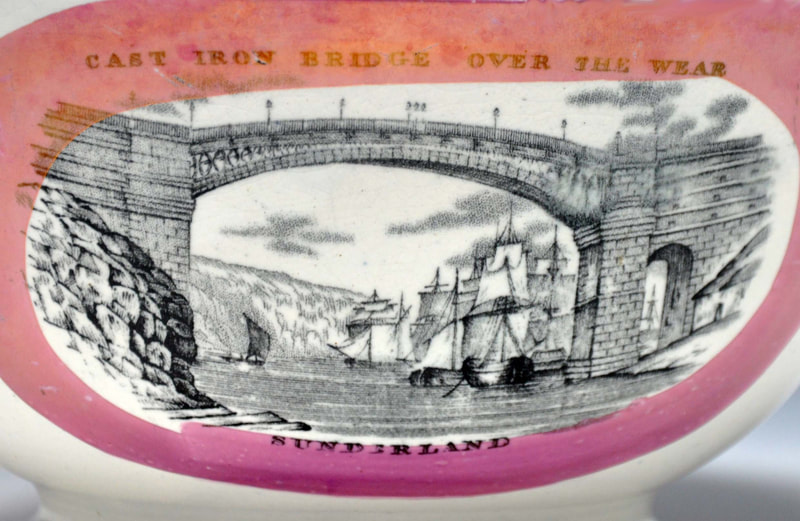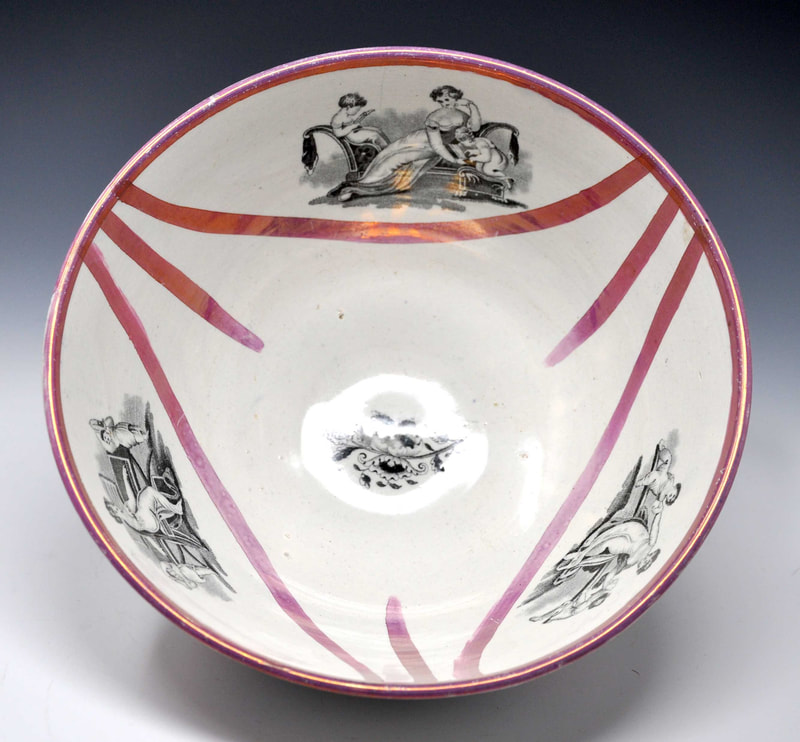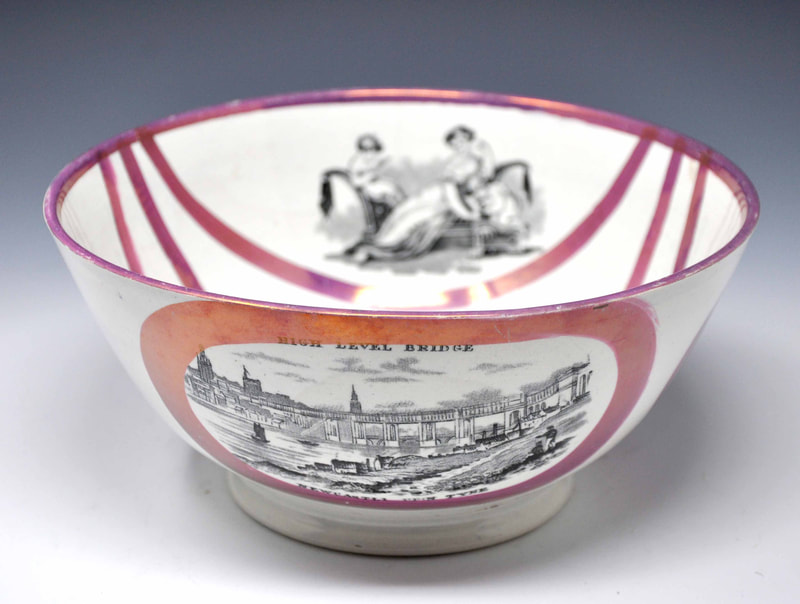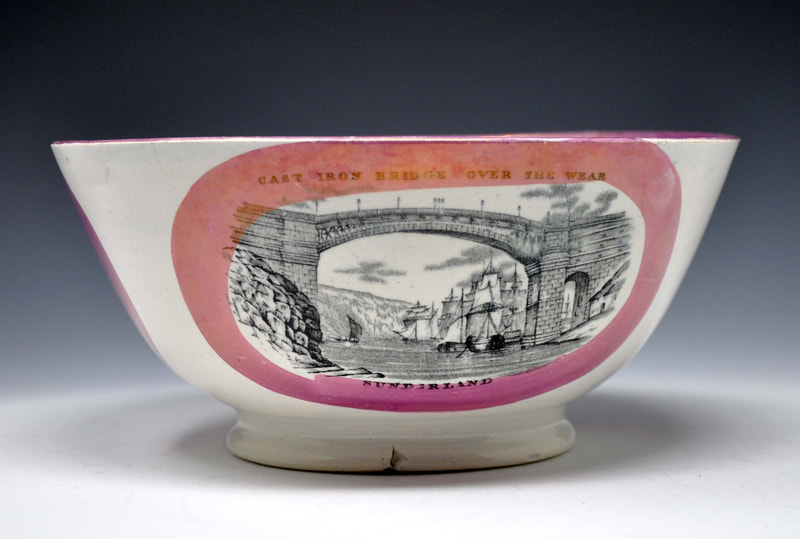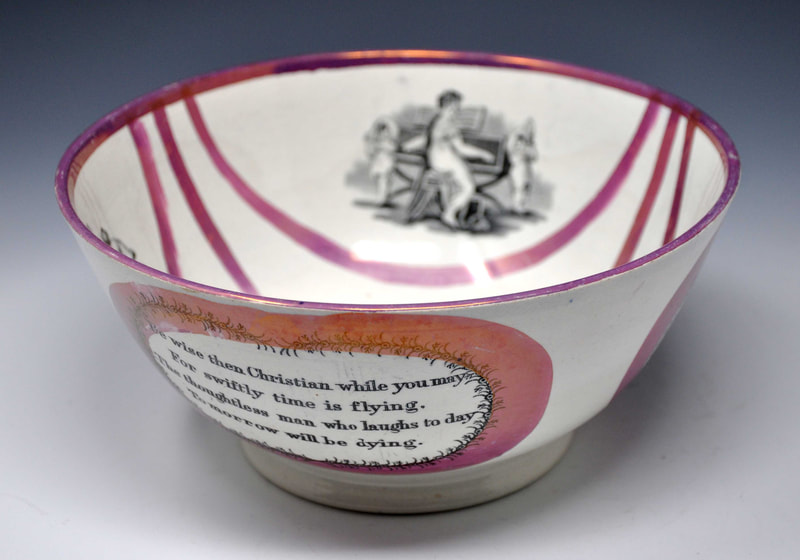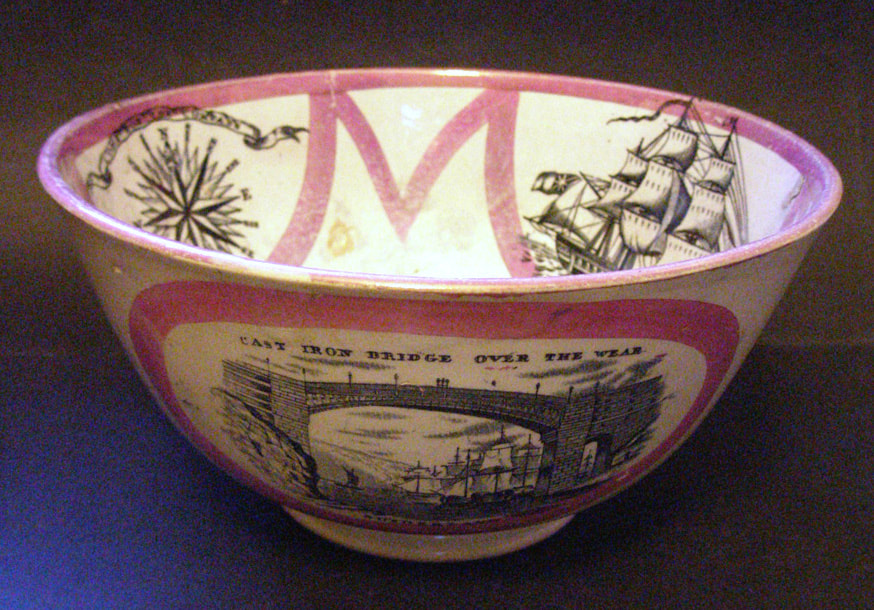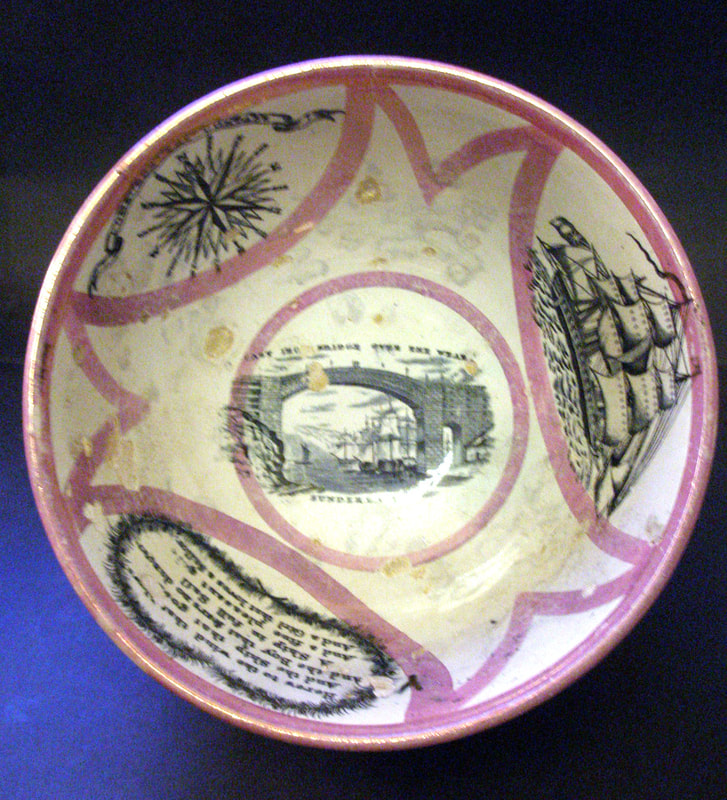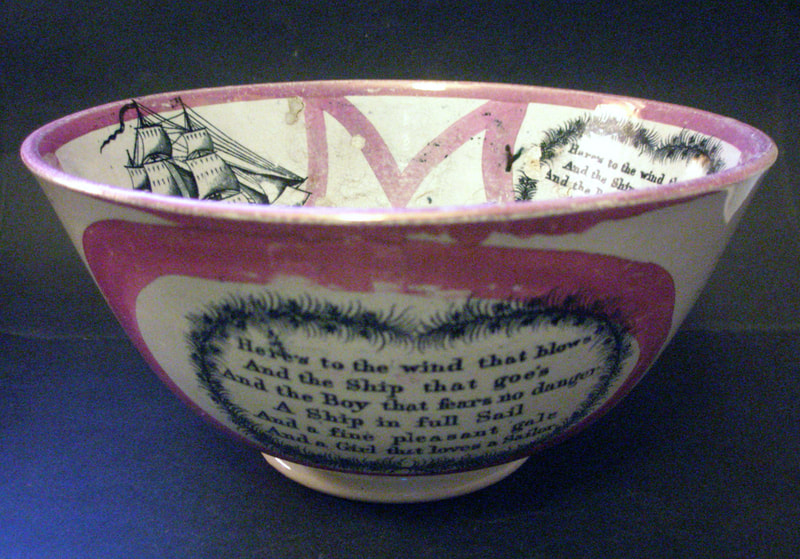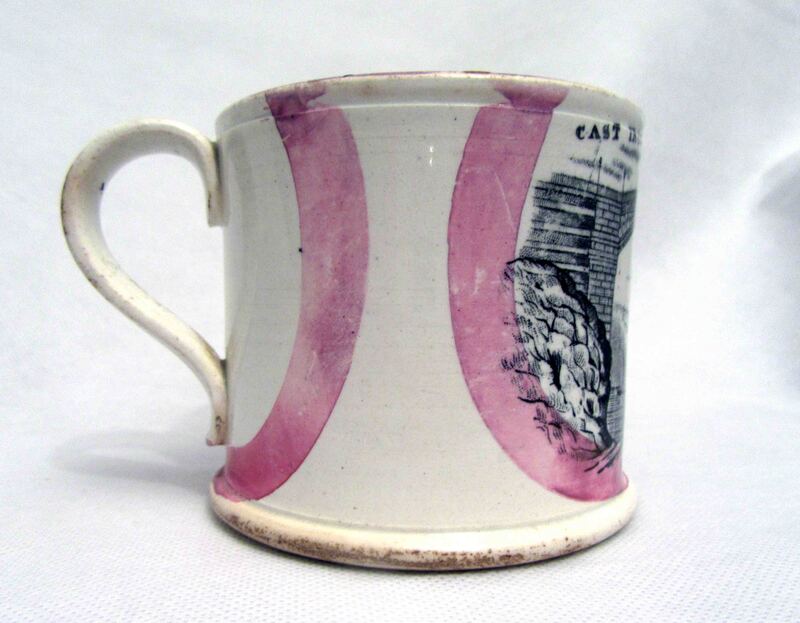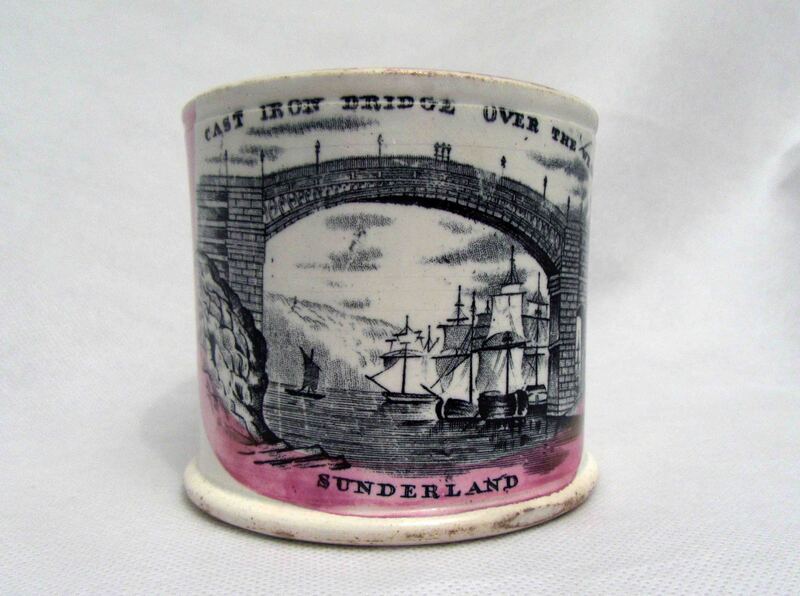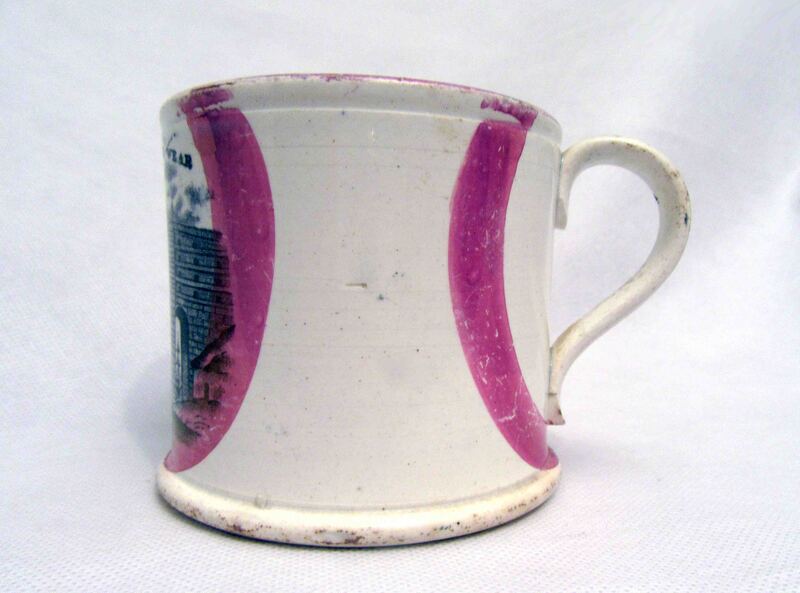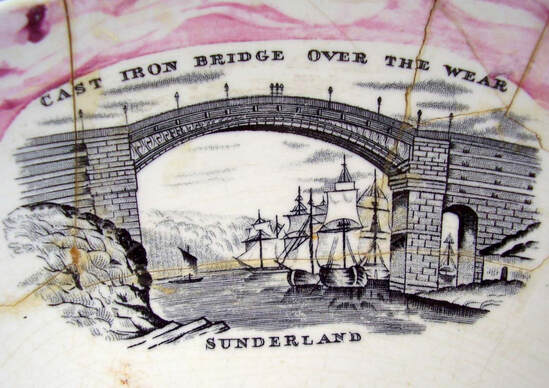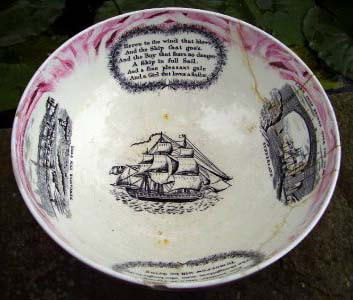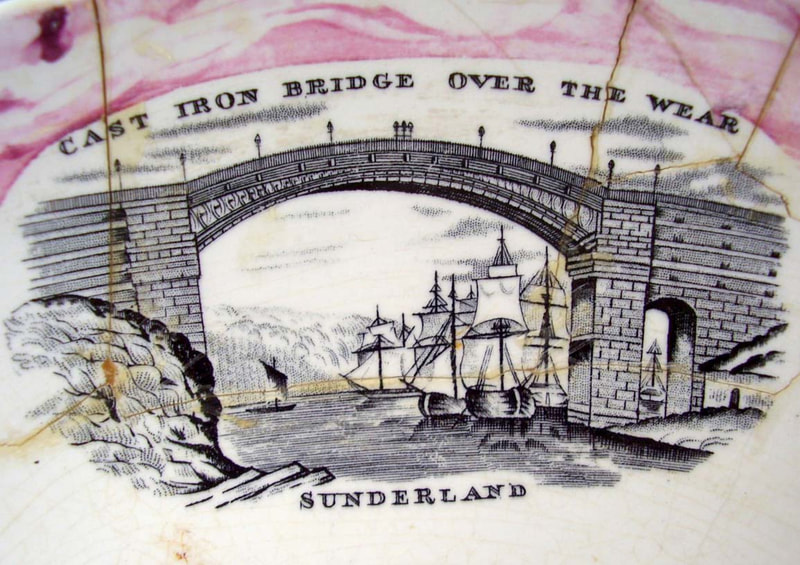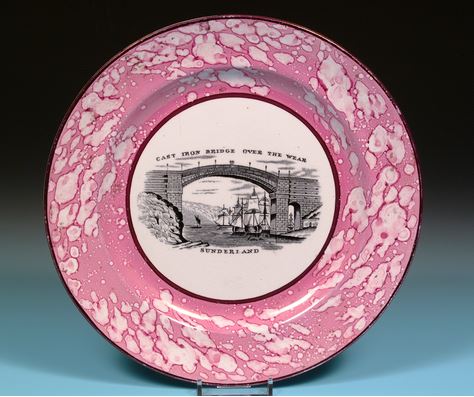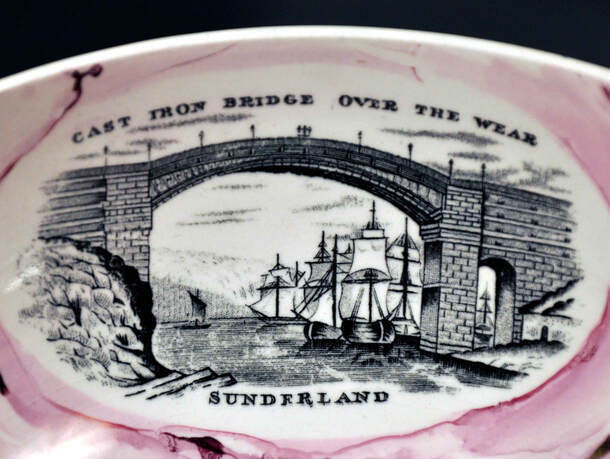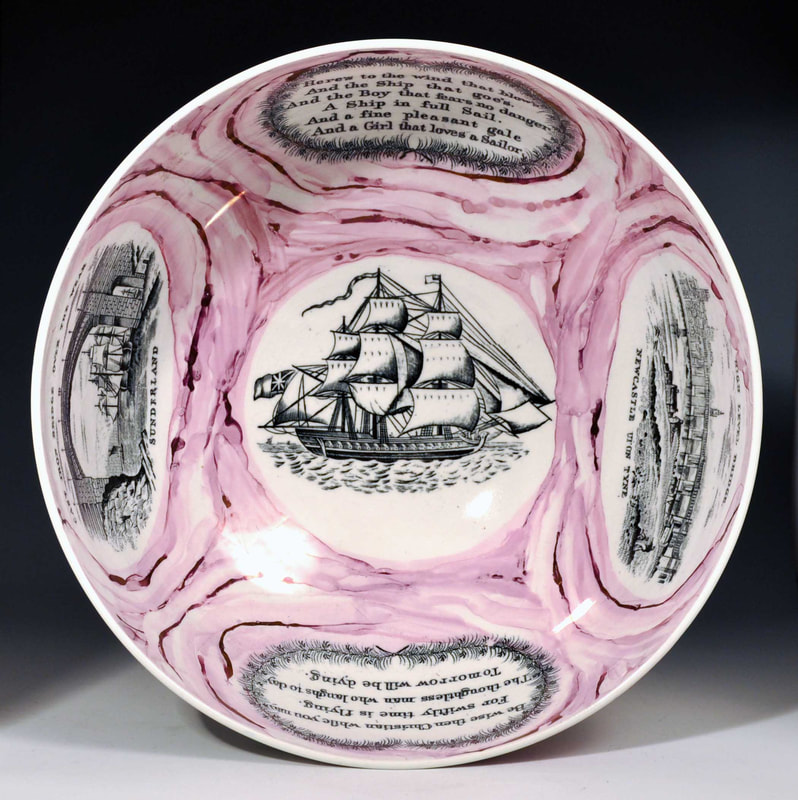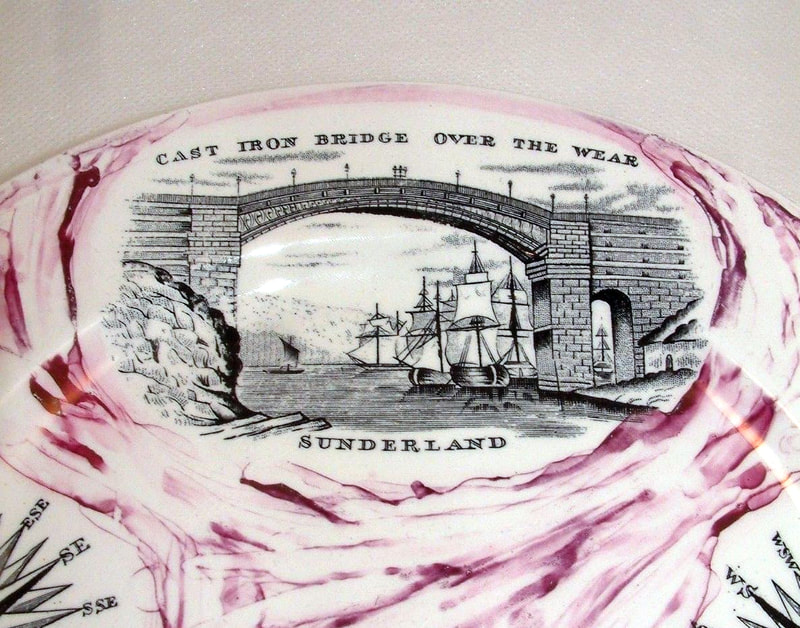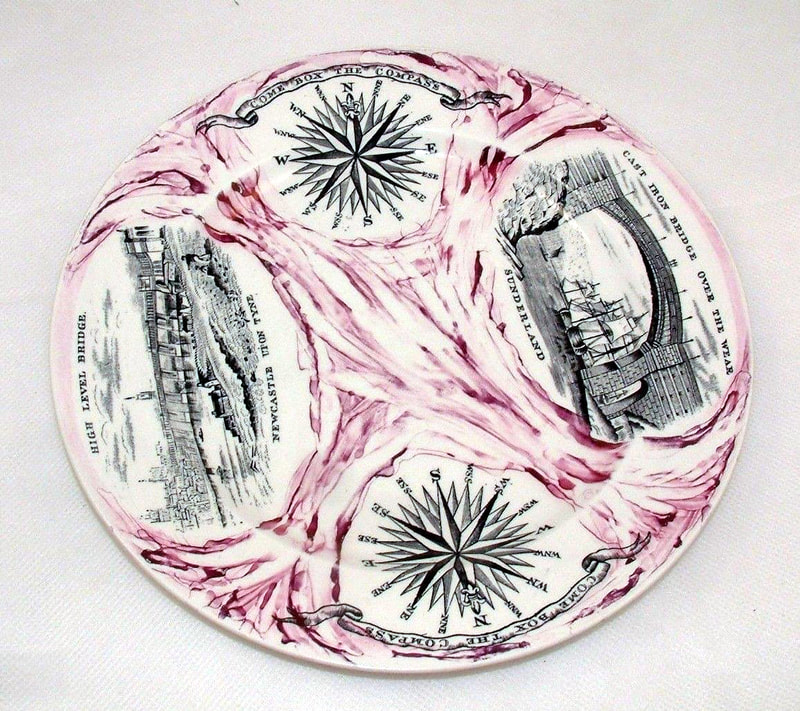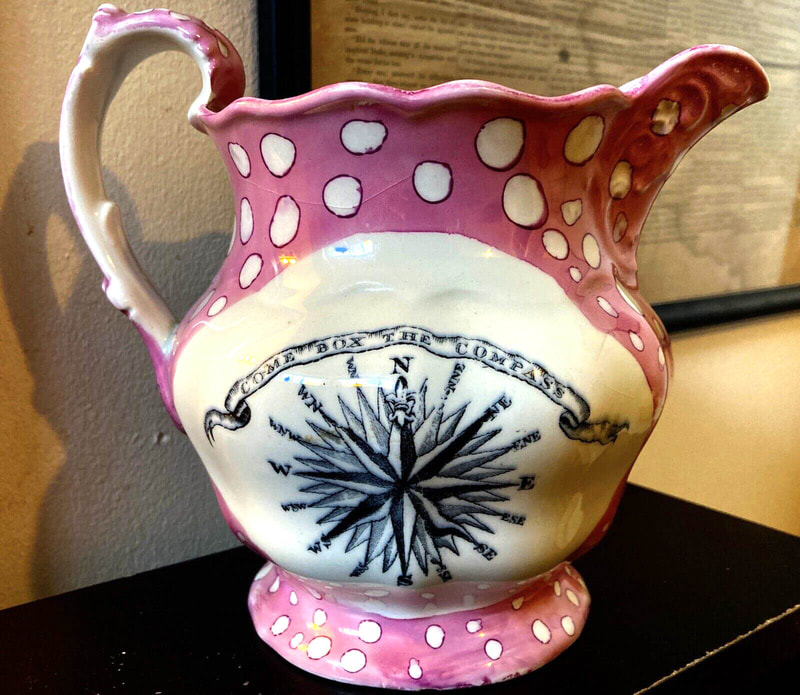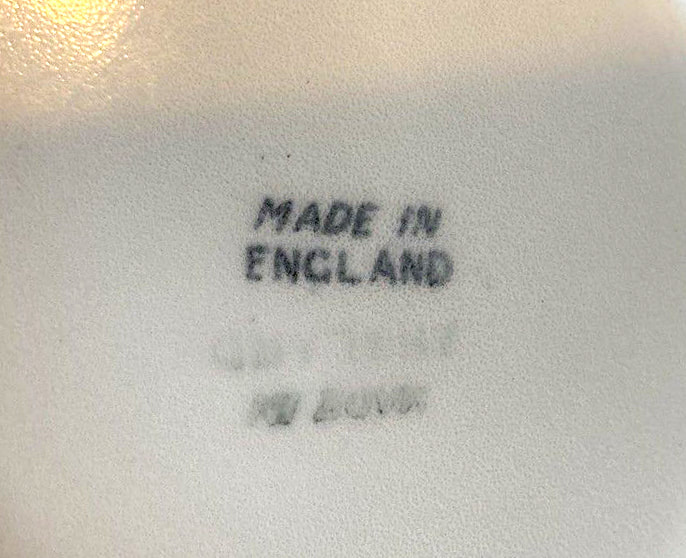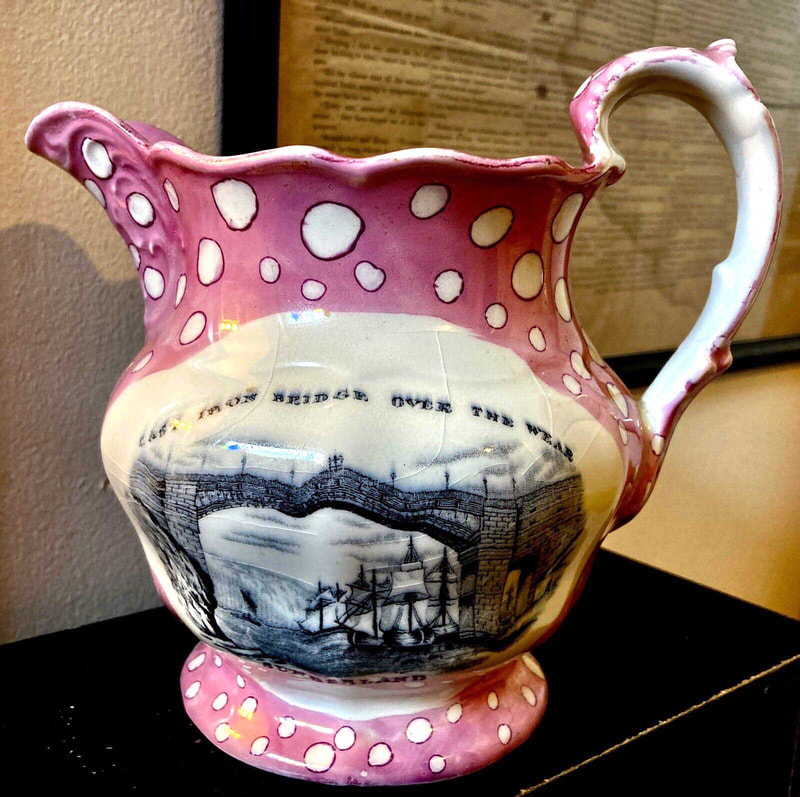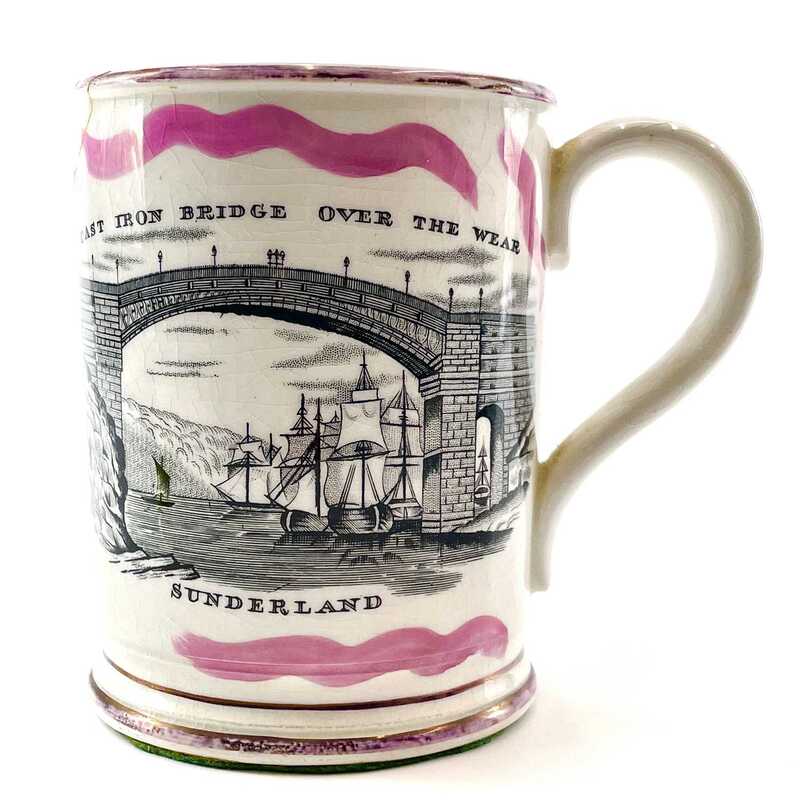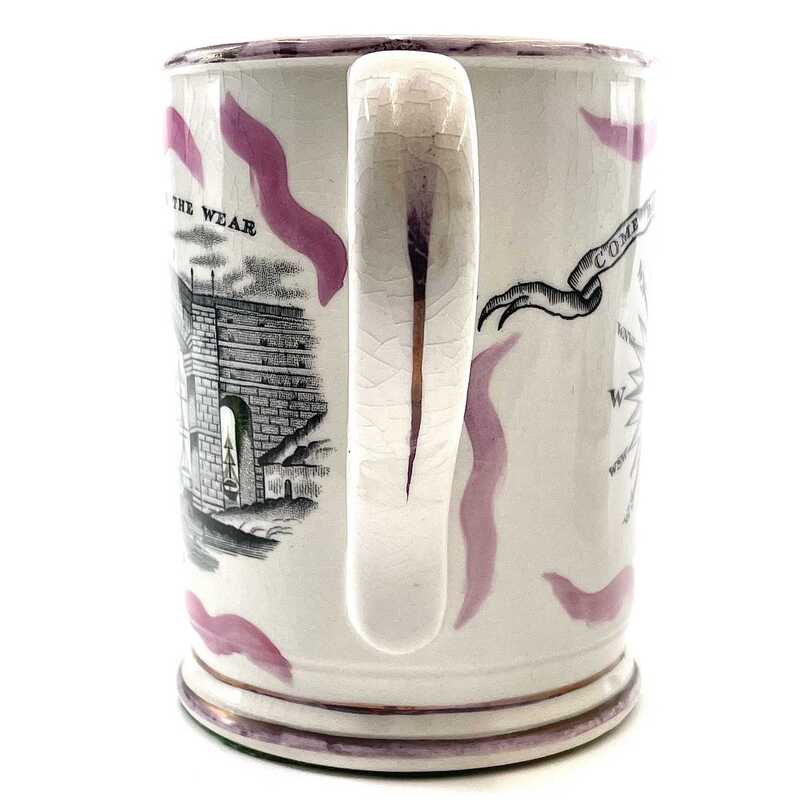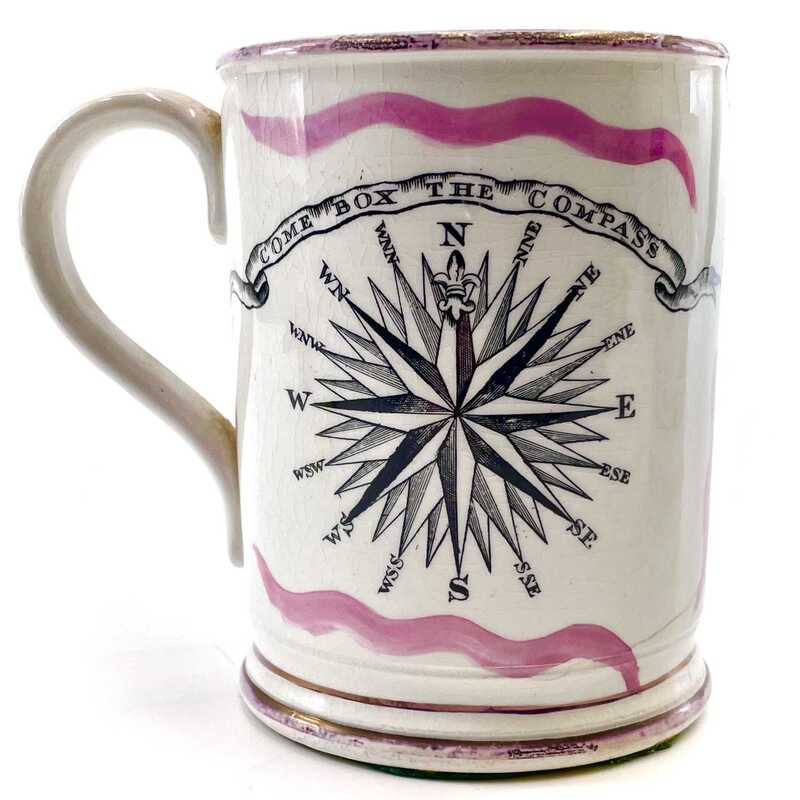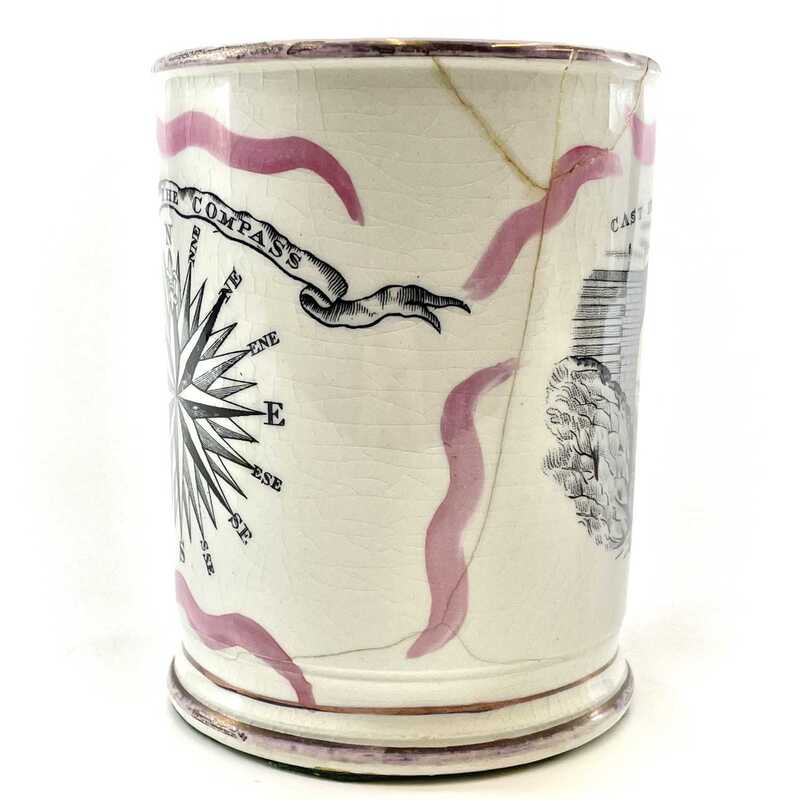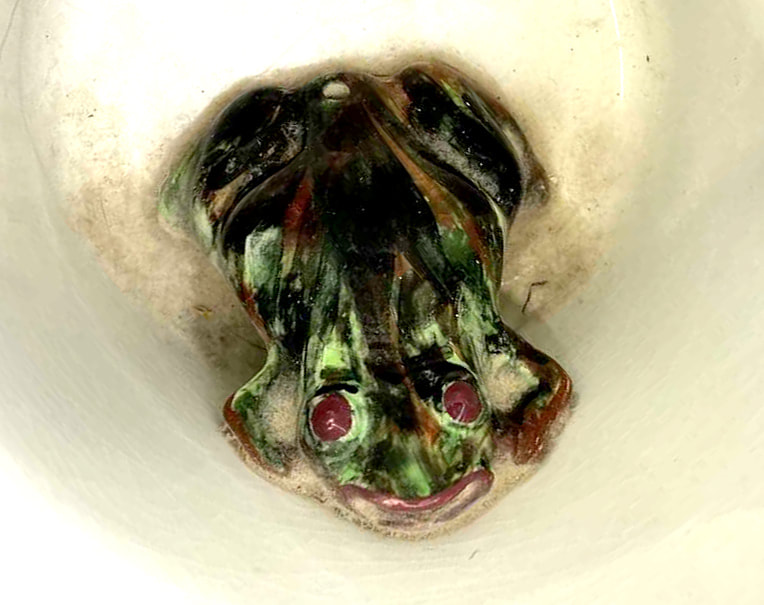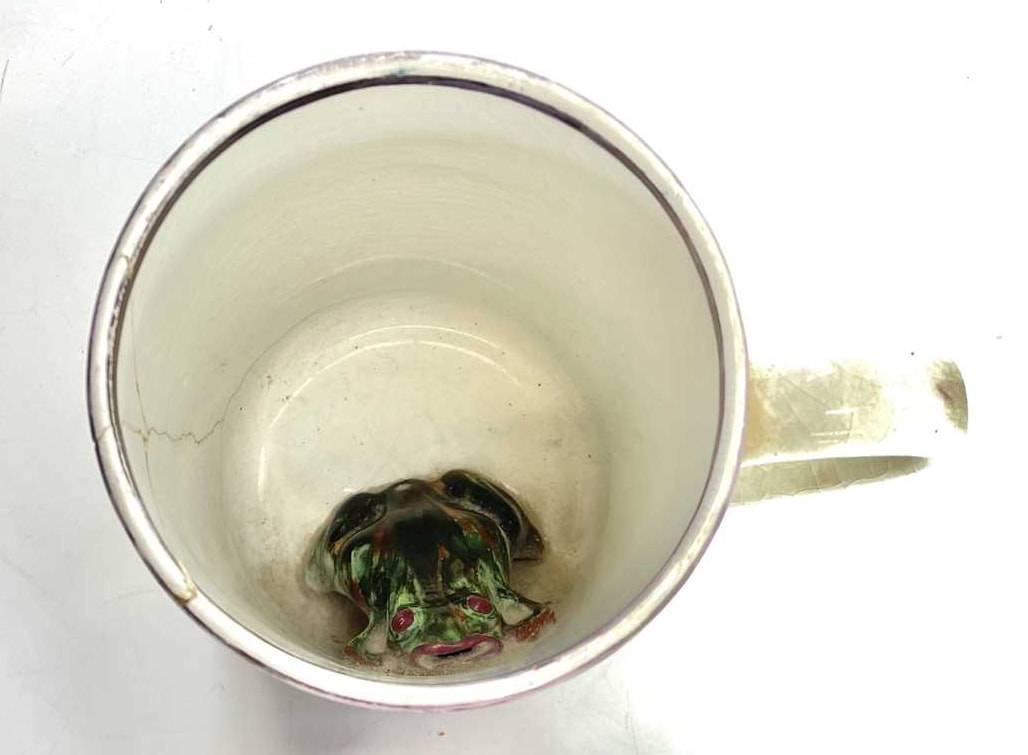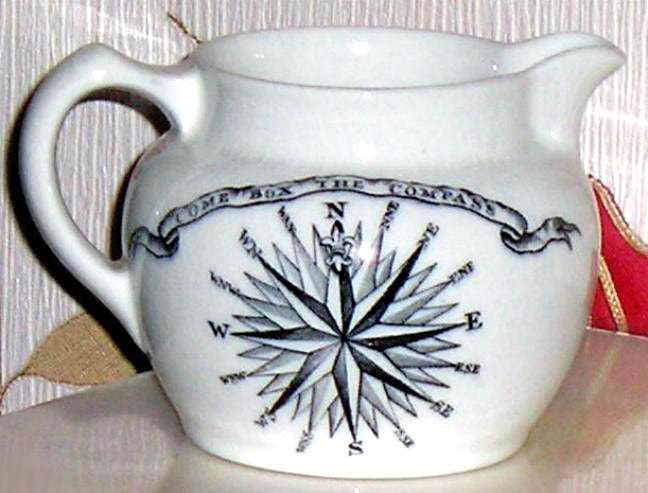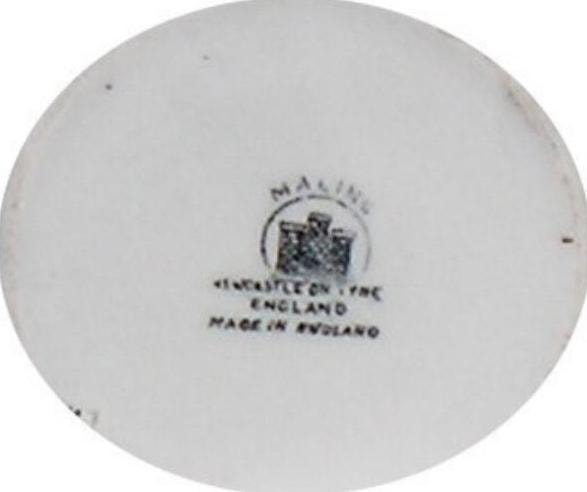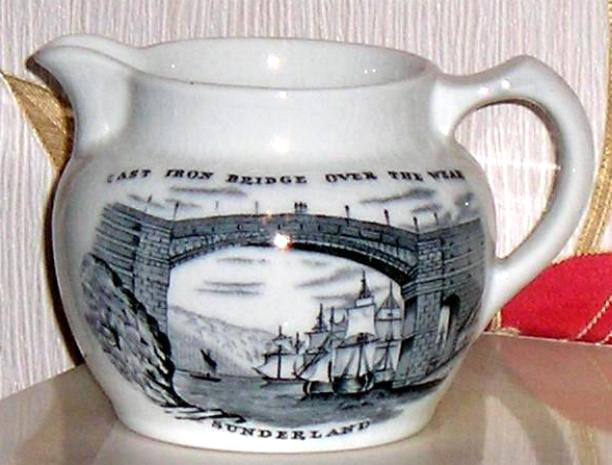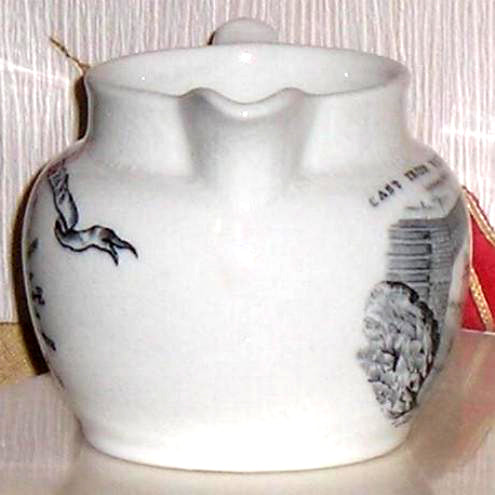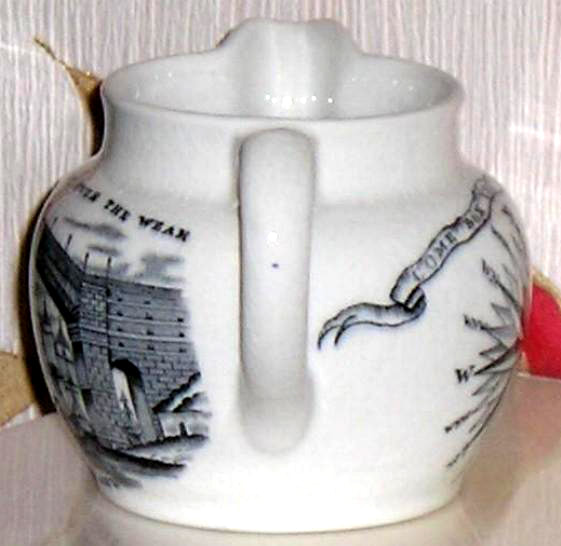Cast Iron Bridge Over the Wear, Sunderland
This bridge view, unrecorded in Baker, was likely used by both Fell and Maling. However, fully untangling which Tyneside pottery made which version might take a while.
Attributed to CT Maling, Ouseburn Bridge Pottery
Single large cloud under the left side of the bridge. Full stop after 'Sunderland'.
The script on the plaque above matches that on the reliably attributed CT Maling jug below.
Attributed to John Patton, Phoenix Pottery, Newcastle
Single large cloud under the left side of the bridge. Full stop after 'Sunderland'.
Interestingly, there appear to be two different versions of the transfer on this bowl. Note the shading of the cliffs beyond the bridge. Also, the difference in the cloud shape. This bowl is attributed to Patton on the basis of an inscribed mug with the same Newcastle High Level Bridge transfer. The left version is very similar to the Maling-attributed transfer.
This appears to be the 'Patton' version of the transfer with the large cloud on the left under the bridge. The plate was likely made after the closure of the Phoenix Pottery in 1860. It has an indistinct impressed mark, which could be JOHN CARR & SONS with the word NORTH in the centre and cropped SHIELDS at the bottom. However, I'm unsure!
Attributed to either CT Maling, Ouseburn Bridge Pottery, or
Thomas Fell, St Peter's Pottery, Newcastle
+ shaped cloud under left side of the bridge.
The transfer paired with another of the High Level Bridge in Newcastle on a large jug.
A smaller jug with the transfer, and beneath it a bowl. Unusually, on the bowl, the Sunderland and Newcastle bridge transfers are married with Adam Buck-type engravings from an older copper plate (c1820). See RC Bell (p15) for a copper plate with these designs 'belonging to Robert Maling'. However, I had previously attributed the large jug above to Thomas Fell. So at present I'm torn over this attribution.
Attributed to C T Maling, Ouseburn Bridge Pottery
X-shaped cloud under the left side of the bridge. The version of the ship on this bowl also appears on later Maling reproductions (see below).
Attributed to C T Maling, Ouseburn Bridge Pottery
Linear clouds under left side of the bridge.
I haven't seen this plate in the flesh from the Sunderland Museum & Winter Gardens, Tyne & Wear Archives & Museums collection. They have it listed as 19th century with impressed indistinct numerals, either '628', '698' or '869'. Maling used this transfer plate into the 20th century (see items below) and I wavered about where it should sit on this page.
Maling reproductions using original transfer plate
The bowl was made in the second half of the 20th century. The moulded jug beneath it, perhaps 1930s. The jug has a 'made in England' stamp, which only ever appears on 20th century items. The writing beneath it is indistinguishable.
The short-limbed frog is also found in reproduction loving cups with very similar lustre decoration. The mug below is again likely 1930s, so almost an antique in its own right.
Below, the transfer on a moulded 'Clayton' jug. The Maling castle mark was used from the 1920s to the factory's closure in 1963.
